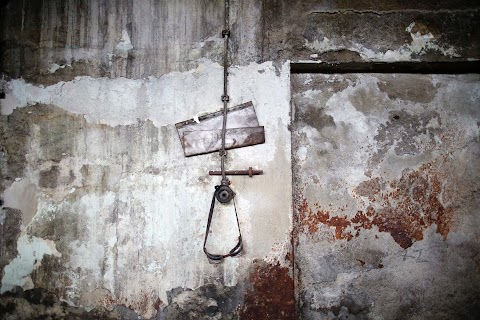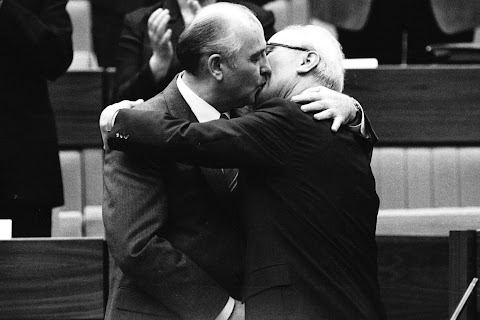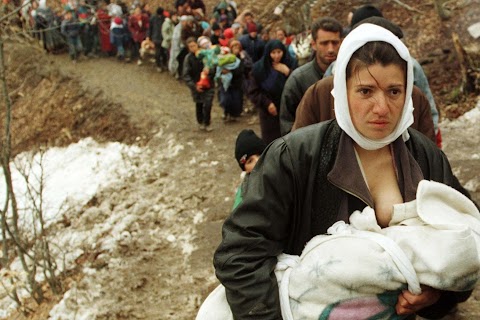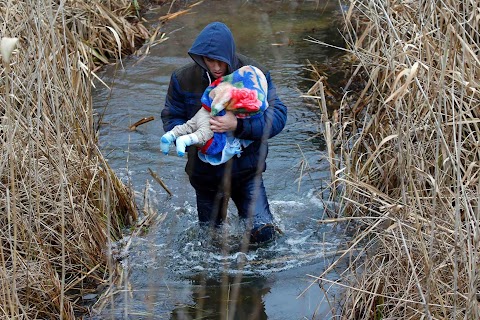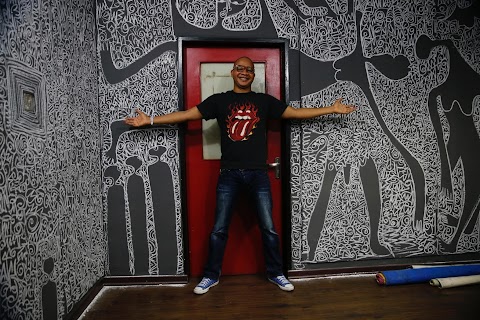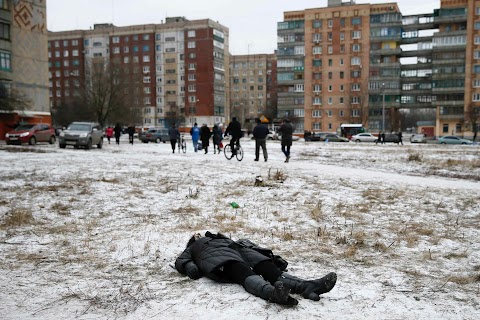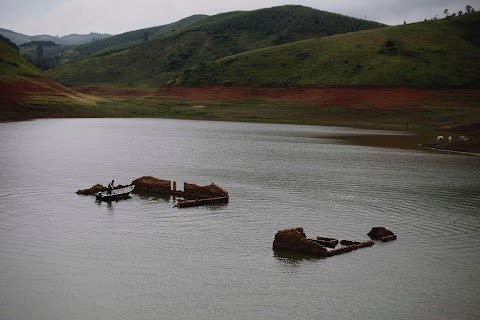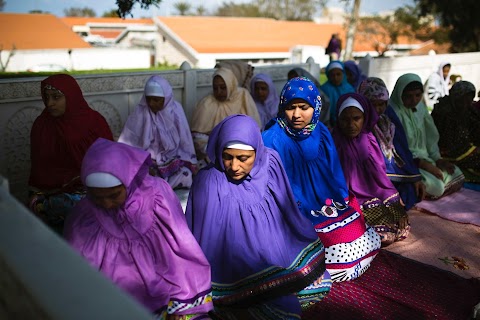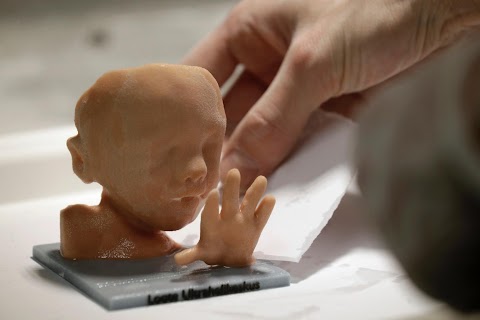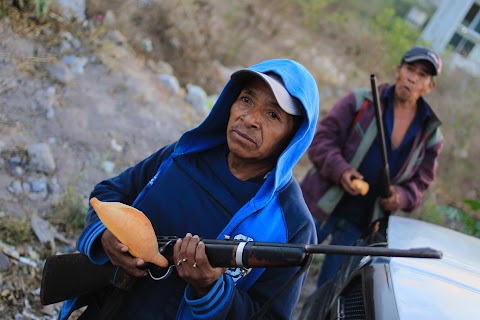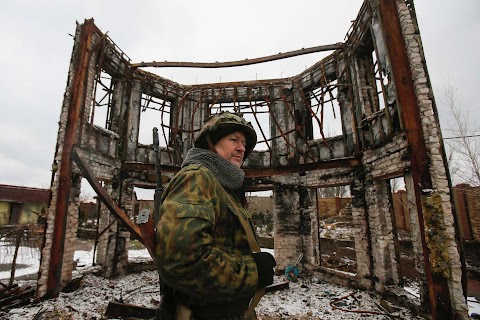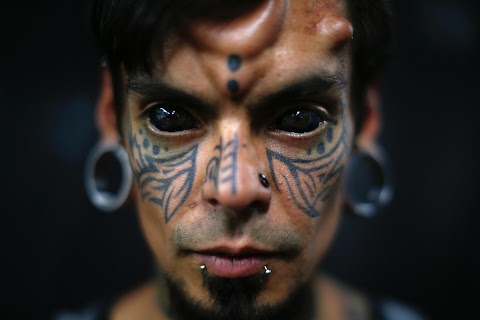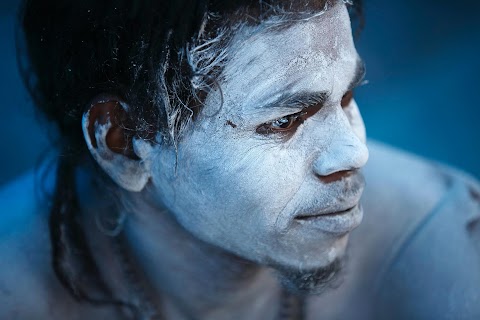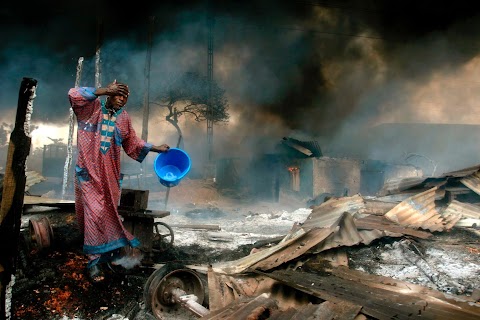
30 years of Reuters Pictures: Part three
 Akintunde Akinleye
Akintunde Akinleye
Reuters multi-award winning photographers are celebrated here in a three part retrospective on the 30th anniversary of the service's launch. They have captured dramatic images illustrating the human tragedy of natural disaster and war as well as the fallout of economic events across the continents, creating iconic images, recognised around the world.
Above, a man rinses soot from his face at the scene of a gas pipeline explosion in Lagos. Up to 500 people were burned alive when fuel from a vandalised pipeline exploded in Nigeria's largest city.

Sgt. William Olas Bee, a U.S. Marine from the 24th Marine Expeditionary Unit, has a close call after Taliban fighters opened fire near Garmser in Helmand Province.
Reuters photographer Goran Tomasevic: If I hadn't already been pointing the camera at the Marine when the bullet hit the wall, there is no way I would have been able to react quickly enough to take those pictures.
Moments earlier I had been lazing around in Afghanistan's blistering desert heat, fending off waves of giant ants, wondering when I might get to test my new 24 mm lens.
Gunshots rang out from beyond the perimeter of the compound the U.S. Marines were guarding in the district of Garmser, a Taliban stronghold in Helmand province, the biggest opium-producing region on the planet.
I grabbed my boots and cameras and ran to look. The Marines had spotted some Taliban moving around the compound some 200 meters away. I took a quick look over the wall but couldn't see any Taliban. Then the gunfire began again. The Marines opened up with heavy machine guns. The Taliban answered back with single shots.
I thought I'd better go back and put some trousers on. I also grabbed my flak jacket, helmet and some water. As soon as I got outside the firing erupted again.
Sergeant William Bee was there with his M-16 rifle. He stood up and aimed his rifle over the wall. Suddenly it seemed to explode from an incoming round and Bee was down.
I dropped my cameras and jumped towards him. I felt his head and neck expecting to find blood, but there was none. He was breathing, but unconscious.
I picked up my cameras and shot a few more pictures, then went back to see how Bee was doing. When I found him, he was grinning from ear to ear. It was his lucky day. He hadn't been hit or seriously hurt.

A man cries as he holds the body of his brother after a bombardment in Gori, 80 km from Tbilisi.
Reuters photographer Gleb Garanich: I was about to head off on a fishing holiday when my boss called proposing that I cover the unfolding conflict between Georgia and Russia. In a matter of hours, I was on my way to the airport and around midnight I landed in Tbilisi.
Early the next day, I went off to the Georgian town of Gori together with colleagues from Reuters TV. We took some pictures then decided to head out of town towards Tskhinvali, capital of the separatist region of South Ossetia.
But within ten minutes our Tbilisi photographer Dato - using a walkie-talkie I had brought to make up for poor telephone communications - was shouting down the line that a bombardment was under way on the outskirts of Gori.
Five minutes later, a series of bombs began exploding in another district on the road heading back to Tbilisi. I informed Dato of events on the walkie-talkie. Within minutes, Dato arrived at the spot and reported considerable destruction and victims and within five minutes we, too, were at the site.
In the street, Georgian soldiers were taking the wounded out of apartment buildings or carrying away bodies covered in blankets. I then saw a man in a neighbouring courtyard weeping over the body of his brother. Georgian servicemen tried to help him and cover the corpse but he did not let them, hurled his mobile telephone at them and allowed no one to approach the body. He tore off his t-shirt and tried to cover his brother's body with it before sitting on the ground and embracing his brother's corpse. Ten minutes later, he was calmed down by neighbours and soldiers took away the body.

Staff members stand in a meeting room at Lehman Brothers offices in London.
Reuters photographer Kevin Coombs: This is a very simple story. This photo was shot from the fourth floor newsroom at our offices in Canary Wharf, the heart of London's financial district. I was working on the pictures desk when I noticed three or four journalists looking out of the window.
This is a busy newsroom and people don't hang around staring out the window so I immediately grabbed my camera and ran across to see what was happening and spotted the Lehman employees.
I knew Lehman was struggling and I knew that was the Lehman Brothers building. As I was shooting the picture I was really thinking about how best to stop the reflections as I was shooting through thick glass.
The people lining up is what struck me first but I did not realise the significance of it until I walked back over to the desk and checked our systems which showed the Lehman share price dipping. It became obvious that this was a crisis meeting and at that point I knew this was an important picture.
The picture has been used over and over to illustrate the beginning of the global financial crash. For me to shoot one of my most used pictures from our newsroom window is quite bizarre, but it proves you only see good pictures when you look around and have your camera ready at all times.

Israeli soldiers mourn during the funeral of their comrade Alex Mashavisky at a cemetery in Beersheba.
Reuters photographer Eric Gaillard: I was in Israel to help out the Reuters Jerusalem office during the Israeli offensive in the Gaza Strip in January 2009.
They asked me to go to Beersheba to cover the funeral of an Israeli soldier, Alex Mashavisky, who was killed in an operation in Gaza.
There was so much emotion at this funeral to begin with, and within minutes a rocket exploded near the cemetery and everybody had to fall to the ground. It was a really surreal and emotionally charged moment.
The place was so narrow and there were so many photographers. The challenge was to hold a spot where I would be able to see the ceremony.
I shot this picture with a Canon Mark III and a zoom 16-35 lens. A 14 mm would have been much better because the place was very narrow and I was really close from the soldiers. I sent the picture from the cemetery with a MIFI which was at this time a novelty.

The Northern Lights are seen above the ash plume of Iceland's Eyjafjallajokull volcano.
Reuters photographer Lucas Jackson: The ash cloud brought the greatest disruption to European air travel since World War Two, and the only way to get to Iceland was to fly from North America. I travelled overnight, arriving at Keflavik airport at 6:30 a.m. on April 17.
In a rented car I drove east towards the ash plume on the horizon. The scale of the assignment had begun to sink in, and I realized it would require careful thinking, rather than instant reaction.
For images of the eruption itself I was dependent on the weather.
The plume would be invisible if it was overcast, and if the wind died the ash would turn to a haze. For a photograph of lightning flashing inside the ash cloud I had to wait for several hours on a washed-out road, and physically hold my shutter open for more than two minutes.
To show vehicle-size chunks of lava exploding out of the volcano I had to drive through eight different rivers and up a mountain to angle a 300 mm lens at the crater. On my last evening I was blessed with a show from the Aurora Borealis (Northern Lights) while lava illuminated the ash plume from below.
I will always remember this assignment fondly. I feel lucky to have been able to document the eruption so others could share in the amazement - watching Mother Nature negate centuries of human technology and progress with one of the most beautiful sights on earth.

Beach goers sunbathe behind a wall of hay bales, used to absorb any oil that might come ashore on Dauphin Island, Alabama.
Reuters photographer Brian Snyder: I was in Alabama and Mississippi covering the BP oil spill and took this image while in a helicopter with the Alabama Army National Guard.
We had been flying for a while, surveying the protective booms installed around the barrier islands in the Gulf of Mexico off the Mississippi coast, and were making our way back to the base.
It's always challenging photographing from a helicopter - apart from making sure the images are sharp despite the helicopter moving and bouncing around, images pass by fairly quickly so you have to be fast.
To me, this image shows an important aspect of the oil spill story: the impact on the daily lives of the residents and the significant, negative impact on tourism which is an important part of the region's economy.
It also shows some of the effective and extremely low-tech ways to protect beaches from oil washing ashore - in this case simple hay bales. It was a challenge, when shooting this story, to have images that put the oil spill in context, and I think this image does that.

An opposition supporter holds up a laptop showing images of celebrations in Cairo's Tahrir Square after Egypt's President Hosni Mubarak resigned.
Reuters photographer Dylan Martinez: I was lucky enough to be sent to Egypt in 2011 for what became known as the “Facebook Revolution.” Thousands of Egyptians had taken to the streets to demand the end of President Hosni Mubarak's 30-year rule.
When I arrived in Egypt, customs officials at the airport confiscated almost all of my kit but after over four hours of discussions, one customs official took pity on me. He let me keep a Nikon D700 and a 50mm lens.
There are some days that stay with you forever. The day I took this picture was one of those. After two weeks of almost no sleep, one arrest and even a beating by opponents of the revolution, I was happy to be in Tahrir Square the moment the news broke that Mubarak had stepped down.
The problem for me was that the news broke at after dusk. As the euphoria rolled around the square, some jumped in jubilation while others shed tears of joy. The scene was incredible but I was frustrated: It was so dark that I could not capture much of the action. I was seeing history but unable to get the picture.
Then I spotted this man holding a laptop and chanting "Facebook! Facebook!" like a football supporter. Nice moment. I was just relieved he did it in a pool of light.

A Turkish riot policeman uses tear gas as people protest in Taksim Square in Istanbul.
Reuters photographer Osman Orsal: I was covering protests in Istanbul which began as a demonstration against government plans to demolish a small park in central Taksim Square but evolved into one the biggest anti-government protests in over a decade.
I was standing between the protesters and the police as the police began firing tear gas at a close distance. The crowd started to run in different directions, causing chaos. I started shooting and the lady in the red dress was standing right at the front.
The picture depicts the somewhat unequal struggle between the police and the protesters by showing a police officer firing tear gas from such a close distance towards a woman who had little room to defend herself.
How popular this image became has actually made me proud. It was described as "iconic" by politicians, artists, writers and ordinary citizens. I have won around a dozen awards and I was and still am humbled by people's appreciation of my work over this picture.
Slideshow

An injured child receives medical treatment after an earthquake in Port-au-Prince. The 7.0 magnitude quake rocked Haiti, killing thousands of people as it toppled the presidential palace and hillside shanties alike.

Marooned flood victims try to grab onto the side bars of a hovering army helicopter which arrived to distribute food supplies in the Muzaffargarh district of Pakistan's Punjab province.

Rebel fighters jump away from shrapnel during heavy shelling by forces loyal to Libyan leader Muammar Gaddafi near Bin Jawad.

A picture of North Korea's founder Kim Il-sung decorates a building in the capital Pyongyang.

Lesleigh Coyer, 25, lies down in front of the grave of her brother, Ryan Coyer, who served with the U.S. Army in both Iraq and Afghanistan, at Arlington National Cemetery in Virginia.

Bodies of people activists say were killed by nerve gas in the Ghouta region are seen in the Duma neighbourhood of Damascus.

Displaced people from the minority Yazidi sect, fleeing violence from forces loyal to the Islamic State in Sinjar town in Iraq, walk towards the Syrian border.
